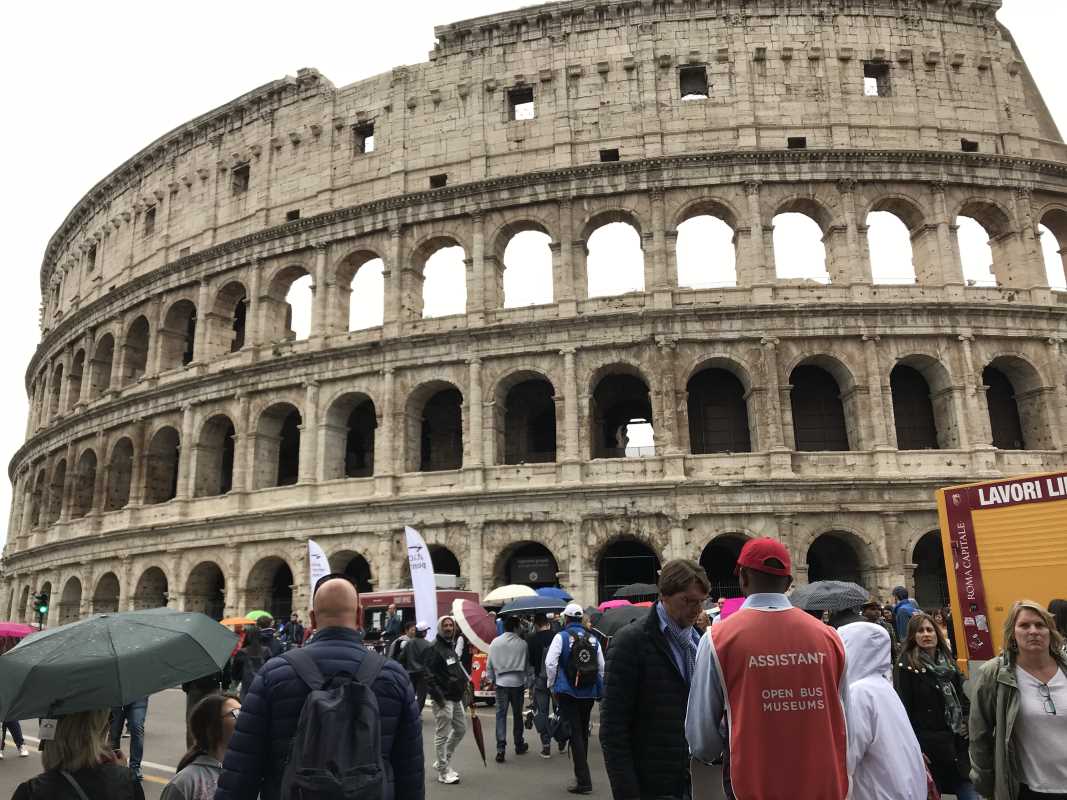The Colosseum in Rome stands as one of the most iconic landmarks in the world, drawing millions of visitors each year with its grandeur and rich historical legacy. Known as the Flavian Amphitheatre, this ancient structure has captivated hearts and minds for centuries. Let’s delve into its fascinating history, architectural brilliance, and enduring significance.
The Architecture and Design: An Ancient Marvel
The Colosseum, constructed between 70 and 80 AD during the reign of the Flavian emperors, is a testament to ancient Rome's engineering genius.
- Capacity and Purpose:
- Designed to host up to 80,000 spectators, it was the venue for grand spectacles such as gladiatorial contests, animal hunts, and mock naval battles.
- The amphitheater's oval shape ensured unobstructed views for attendees, making it a pioneer in stadium design.
- Engineering Mastery:
- The structure featured advanced ramp, elevator, and trapdoor systems. These innovations facilitated seamless transitions during events, enhancing the dramatic experience for spectators.
- Made from travertine, tuff, and concrete, the Colosseum demonstrated remarkable durability.
Even today, its architectural ingenuity continues to inspire modern stadium designs.
Historical Significance: More Than Just an Arena
The Colosseum is more than a relic; it is a window into Rome’s vibrant past.
- Funding Through Conquest:
- The amphitheater was financed using spoils from the Jewish Revolt in 70 AD, symbolizing Rome’s imperial power.
- Events and Spectacles:
- Beyond gladiatorial combat, the Colosseum hosted elaborate reenactments of myths, public executions, and even large-scale animal hunts featuring exotic creatures imported from Africa and Asia.
- These events served both as entertainment and a demonstration of Rome’s dominance and cultural sophistication.
Today, the Colosseum symbolizes the Roman Empire's grandeur and complexity, bridging ancient history with modern times.
Restoration Efforts: Preserving the Past
Over the centuries, the Colosseum has faced significant damage from natural disasters and human activity.
- Earthquakes and Stone Robbing:
- Earthquakes in 1349 caused extensive structural damage, while its stones were repurposed for building projects, including St. Peter’s Basilica.
- Modern Restoration:
- Restoration projects began in the 19th century and continue to this day. Efforts include reinforcing weakened areas, cleaning the façade, and providing safe access for visitors.
These initiatives ensure that future generations can appreciate this architectural masterpiece.
The Underground Hypogeum: Behind the Scenes
Beneath the Colosseum lies the Hypogeum, an intricate network of underground chambers and tunnels.
- Purpose:
- This area housed gladiators, animals, and stage props before they were hoisted into the arena through hidden trapdoors.
- The complex design allowed for dramatic and seamless entrances, heightening the excitement of the spectacles above.
Exploring the hypogeum today offers a fascinating glimpse into the logistical brilliance behind ancient Roman entertainment.
Visiting the Colosseum Today
The Colosseum remains one of the most visited attractions in the world, welcoming millions of tourists annually.
- Visitor Experience:
- Guests can explore the stands, marvel at the towering arches, and imagine the thunderous applause of ancient crowds.
- Guided tours provide rich insights into its history, while evening visits offer a magical view of the Colosseum illuminated against the night sky.
- Practical Tips:
- Purchase tickets online to skip long queues.
- Combine your visit with nearby landmarks like the Roman Forum and Palatine Hill for a comprehensive historical experience.
Why the Colosseum Endures
The Colosseum is not just a historical site; it is a symbol of human ingenuity, cultural evolution, and resilience.
- Cultural Legacy:
- Recognized as a UNESCO World Heritage Site, it reflects ancient Rome's artistic and engineering achievements.
- Modern Symbolism:
- It serves as a venue for cultural events and ceremonies, connecting past and present.
Whether you’re a history enthusiast, an architecture lover, or a curious traveler, the Colosseum offers an unparalleled journey through time.
The Colosseum is a testament to Rome’s enduring legacy of innovation, culture, and power. From its awe-inspiring design to its rich historical significance, it continues to captivate visitors and scholars alike. Exploring this ancient amphitheater is not just a trip back in time—it’s a celebration of humanity’s ability to create, endure, and inspire. For anyone planning a visit to Rome, the Colosseum is a must-see landmark that promises to leave an indelible mark on your journey.
 (Image source: Inuvo / DSR)
(Image source: Inuvo / DSR) 





